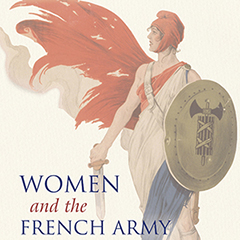August 16, 2017
Beyond Rosie the Riveter: Women were integral players in the French military during the world wars

The roles of women in the French Army in the early 20th century show plenty about military history and women's history — two fields of study that are often studied separately, according to a Kansas State University historian.
"These two fields have worked very hard to ignore each other," said Andrew Orr, assistant professor of history and author of "Women and the French Army during the World Wars, 1914-1940." "My book's perspective on how active women were with the military and the critical roles they played in national defense — in peace and at war — is not taught in textbooks. It's a new story."
Women's studies have not shed light on the full role women played in the war because they have not engaged enough with the military side of the history, Orr said.
"They look at the story from the perspective of how liberating or not liberating it is for women, rather than seeing how important women were to the functioning of the army itself," Orr said. "Despite four decades of feminist scholarship, we haven't really understood how important women were to war in this period."
Military history also has come up short in this regard, Orr said. Military historians have tended to ignore women because they consider women to be part of the home front, whereas they study the battlefield and the army. Women actually were integral parts of the fighting forces, Orr said.
"We need to go beyond seeing women as 'Rosie the Riveter home front supporters' and challenge the existence of the battlefield and the home front as separate entities," Orr said. "The military-civilian divide isn't a wall; it's a series of open doors that people go back and forth between. They're different parts of the same whole."
In addition to being an area worthy of study on its own, the intersectionality between women's history and military history also illuminates how the military relates to the civilian population and the nature of mass warfare after the Industrial Revolution, Orr said.
"For a long time, we've been stuck with an 18th-century model of war, in which there is an army in the field and people back home, but that distinction was obliterated in the 19th century," Orr said. "The military, the civilian world and scholars are still working to understand that and catch up to the reality."
Orr studied staff papers, pension records, letters from women employees to military administrators, a historian's interview with one female military employee, and books in French and English. He found when the men's divisions went to the front, the women came along.
Orr found the primary sources he studied through France's Defence Historical Service and military archives. Funding for this project included a faculty enhancement program grant from K-State's College of Arts and Sciences and support from the University of Notre Dame, where Orr started the research in graduate school. Orr also received funding from the Nanovic Institute for European Studies and an Albert Gallatin Fellowship from the Graduate Insitute of International and Development Studies in Geneva.
